Top Tips for Getting Your Home Ready for Spring
Ten easy ways to maintain your most valuable possession and prepare it for the warmer months.
by ecobee on 03/07/2025 in Home & Design
11 min read

From barbecues and bonfires, to the compulsory backyard night cap after the kids are asleep, this year we should all take a little extra joy in the finer things that this dewiest of seasons has to offer.
Of course, like any spring, it wouldn’t be complete without a laundry list of chores.
We’re here to help. Consider this your unofficial spring maintenance guide. We’ve even included suggestions on which jobs to tackle yourself and which to hand off.
Without further ado, here are our top 10 home maintenance tips for spring.
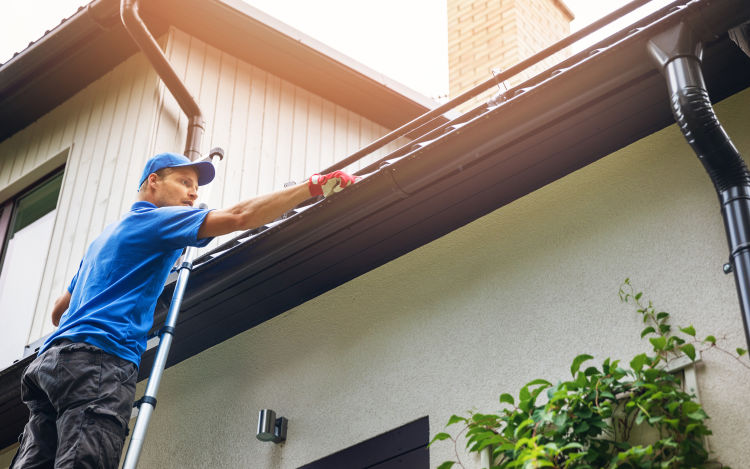
1) Empty your gutters.
Can I do it myself? You could, but you probably shouldn’t.
An eavestrough full of leaves isn’t just an eyesore, its overflowing water can damage your home’s interior and exterior, the roof, and even the foundation.
It’s always best to rid your gutters of any guck early in the season before a heavy spring or summer shower covers your home in H2O and built-up debris.
Keep your feet firmly planted on the ground. Hire a professional.
The task is simple and straightforward: a ladder, bucket, and pair of heavy-duty gloves are all you’ll need to get the job done.
But scaling a flimsy ladder to scoop out bucket after bucket of decaying leaves, pine needles, and dead bugs definitely isn’t for everyone.
We recommend keeping your feet firmly planted on the ground and hiring a professional.

2) Brighten up your life by washing windows.
Can I do it myself? Yes, but consider hiring a professional to clean exterior windows.
Studies have shown that letting more light into the home improves our circadian rhythms and sleep patterns, making us happier and more productive.
Keep your sightlines clear and avoid streaks with our window washing guide:
Step 1: Make your own streak-free glass cleaner.
For a powerful, eco-friendly glass cleaner add 1/2 cup of white vinegar and 1/4 cup of rubbing alcohol to 2 cups of water, per Good Housekeeping. Pour into a spray bottle and shake vigorously.
Clearly label and store out of reach of children as you would any cleaning product.
Step 2: Wash your screens.
Screens collect dust which can blow into the house. Take them out and wash them in your shower or laundry sink under hot water with a soft brush. Let dry before replacing.
Step 3: Choose a dry, cloudy day or work on a shady side of the house.
Avoid cleaning windows under direct sunlight. The heat makes your windows dry too quickly, leaving streaks.
Step 4: Show your curtains some love.
Go over both sides with a microfiber duster or run a damp cloth over blind slats.
Step 5: Remove dirt and grime from window frames.
Vacuum around window frames or use a brush or wet cloth to remove dust, dirt, and grime. This will prevent a muddy mess when dirt is mixed with cleaner.
Step 6: Now for the fun part—cleaning the windows.
Spray plenty of cleaner on your windows, especially if they look particularly dirty, and dry with a clean, washable microfiber cloth.
If you are not comfortable climbing a ladder, hire a professional to wash exterior windows.

3) Replace smoke and CO detector batteries.
The National Fire Protection Association recommends testing smoke alarms and carbon monoxide (CO) detectors periodically and battery changes every six months. Unfortunately, this simple, yet essential fire-safety measure is frequently forgotten.
Replace batteries each time you move your clocks forward in the spring and back in the fall.

4) Refresh your backyard.
With barbecue season around the corner, now’s the time to show your lawn furniture, deck, and stonework some love. Here are three quick tips:
Tip 1: Wipe down patio furniture.
First remove any cushions and rinse with a hose. Cut through the grime by mixing a tablespoon or two of dish soap in a large bucket and wiping your furniture with a dampened microfiber cloth. Rinse again and let dry.

Tip 2: Reseal or restain your deck.
Can I do it myself? You can, but you may want to leave this big, messy project to a pro.
Constant exposure to the elements takes a toll on your deck. Consider reapplying sealant or restaining every one to three years. If you don’t mind getting your hands dirty, you can save between $550 and $1,260 by doing it yourself, according to Home Advisor. Here’s how.
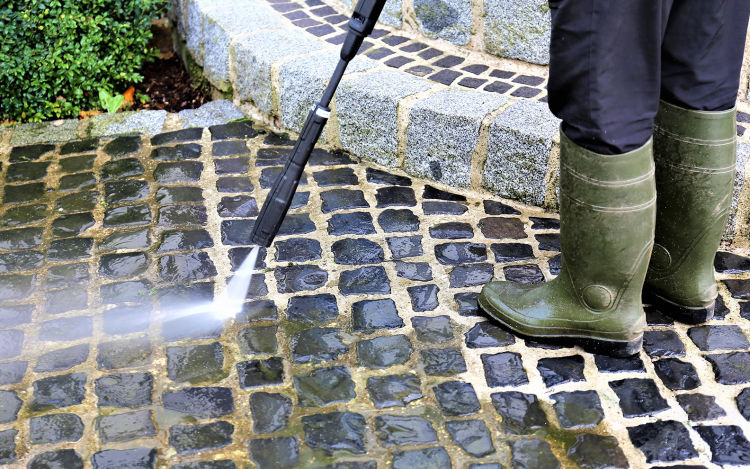
Tip 3: Blast away patio stains.
Can I do it myself? Yes, but it’s important to know what you’re doing.
Pressure washing removes dirt, grime, and unsightly growth.
While blasting away years of filth from your concrete and brick is incredibly satisfying, improper cleaning can do irreparable damage to your surfaces.
Whether you own or rent a pressure washer, The DIY Network recommends selecting an adjustable model and setting it to 3 gpm and 3,000 psi for brick or concrete. Pair with a wide-angle nozzle for thorough, damage-free cleaning of your backyard stonework.
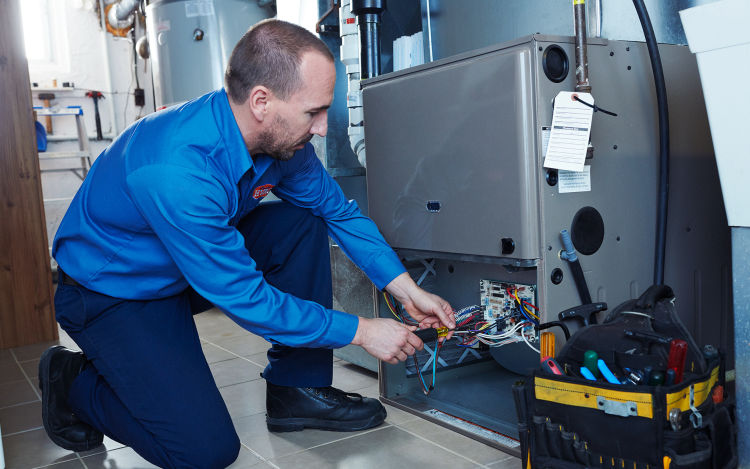
5) Prepare your HVAC equipment for cooling season.
ecobee recommends hiring an HVAC contractor to perform twice-annual preseason system checkups in the spring and fall.
In addition to hiring a pro to maintain your system, here are some tips for a smooth transition into cooling season:
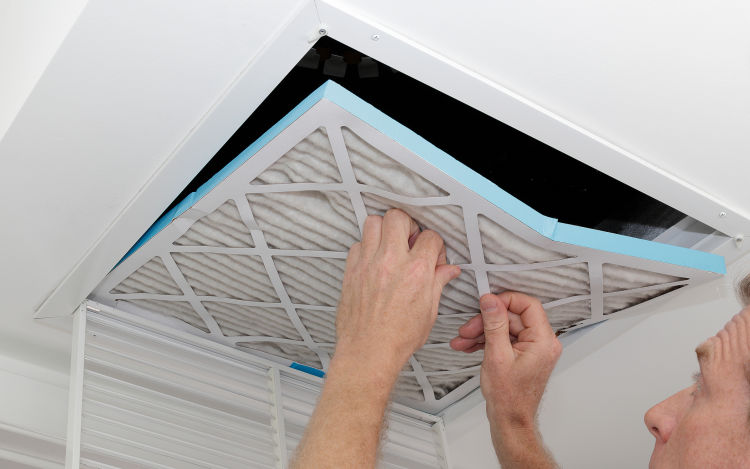
Tip 1: Replace your air filter.
A clean filter not only keeps the air clean, it improves system performance, lowers your energy consumption by 5–15%*, and prevents costly repair.
There are many different kinds of filters on the market, including pleated filters, non-pleated models, and even washable filters.
Pleated air filters are effective at catching even the smallest particles, while non-pleated filters filter out dust, but little else.
Pleated filters are so named because they are folded like an accordion. This gives them an increased surface area which is one of the reasons why they offer the highest level of filtration. When it comes to selecting a new filter, Andrew Gaichuk, ecobee’s senior director of technical operations, suggests purchasing the best pleated model you can afford.
Replace your pleated filter every three months for optimal performance.
In selecting an air filter, pay close attention to the MERV rating. In addition to filtering out common pollutants like pollen, dust, mold, mites, and bacteria, higher MERV-rated models filter out smaller airborne contaminants like pet dander, the volatile organic compounds (VOCs) in cooking oils, smoke, and even viruses.
Tip 2: Adjust indoor air vents.
As part of turning on your cooling system and transitioning into the warmer months, open any indoor vents that were closed during the winter heating season.
Gaichuk recommends closing all basement vents and select vents on the main floor. Doing so will push cool air to the always-warmer second floor.
If any rooms in the house are too hot or cold, adjust the vents accordingly.
Did you know? ecobee thermostats work with ecobee SmartSensor to deliver comfort where it counts. Place ecobee remote temperature sensors in important rooms and hot or cold areas for a more evenly balanced temperature.
Tip 3: Test your air conditioner.
Can I do it myself? Yes, but only when your AC unit is ready.
As a rule of thumb, test the cooling system before you need it (the same rule applies to testing your furnace in the fall). Let your air conditioner run for 15 to 20 minutes to ensure normal operation.
Note, you should only test your AC when the outdoor temperature is above 60° Fahrenheit.
ecobee thermostats make testing your air conditioner easy. Just navigate to Settings > Installation Settings on your thermostat, and then tap Test Equipment.
Once your system is ready, switch your ecobee thermostat from heating to cooling mode.

Tip 4: Adjust the thermostat schedule for cooling season.
The change of seasons will bring about changes to your family’s schedule.
“Review your smart thermostat’s awake, away, and sleep settings early in the spring to make sure they line up with your household’s new routine,” said Gaichuk.
ecobee Smart Thermostat Premium not only allows you to set a daily schedule, it uses occupancy detection and geofencing to automatically adjust for energy savings when you leave and restore comfort settings when you return.
In areas where energy prices vary by time of day, ecobee thermostat users can enable the eco+ feature Time of Use feature for even more energy savings. When activated, your thermostat will automatically pre-cool your home when energy is lower-cost and generated from cleaner sources.
eco+ Time of Use users can save up to an additional 23% on the HVAC portion of their electricity bills.†
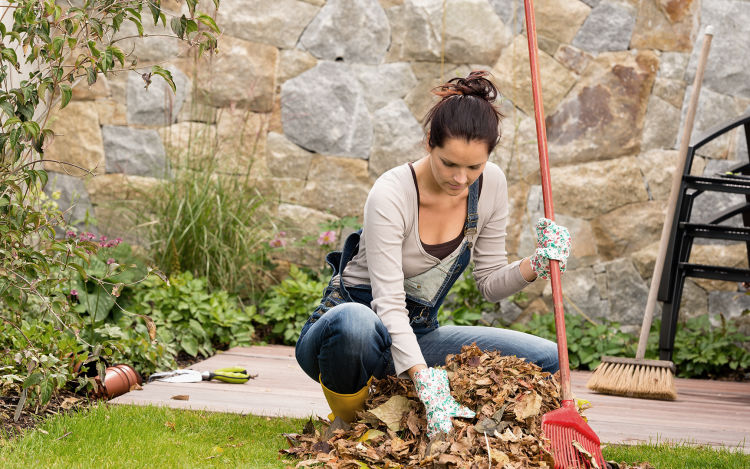
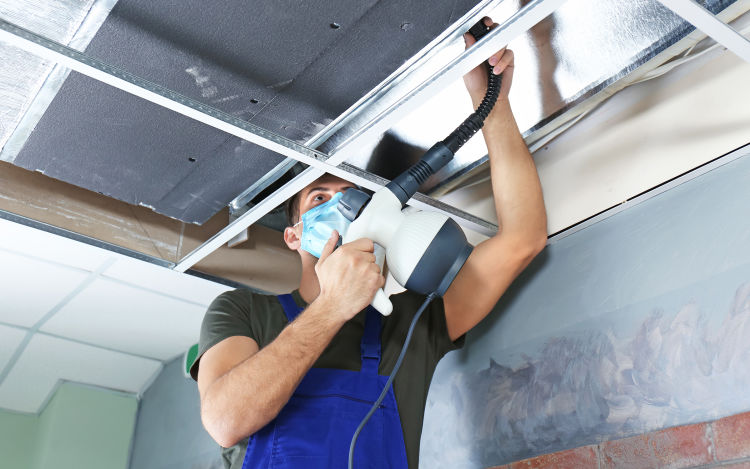
7) Consider air duct cleaning.
Can I do it myself? Probably not. Air duct cleaning requires specialized equipment and training.
Air duct cleaning removes accumulated dust, microbes, and other contaminants from your HVAC system.
Because clean air ducts reduce the pressure on your HVAC filter, we recommend cleaning your ducts every five years.
“Dirty ducts mean more frequent filter changes—a cost that adds up quickly,” said Gaichuk.
It’s also a good idea to clean your air ducts whenever you move into a new home and after renovating.
“A lot of dirt, saw dust, and other airborne particles gets thrown into the ductwork anytime work is being done on a home,” said Gaichuk.
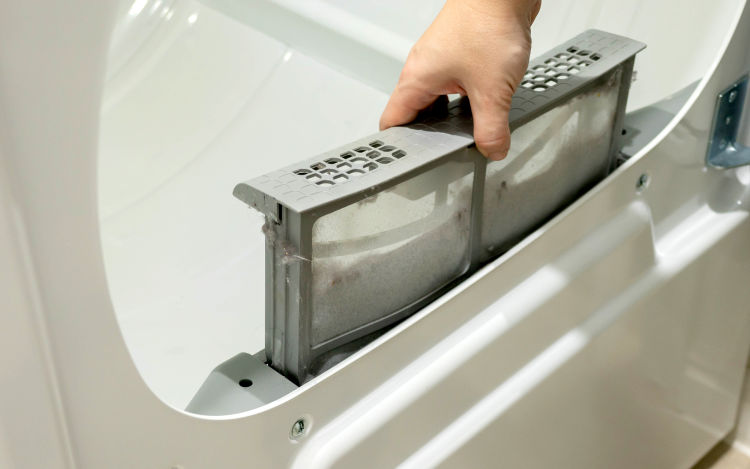
8) Clear the dryer vent.
Can I do it myself? Yes.
According to the National Fire Protection Association, American firefighters respond to over 10,000 fires caused by clothing dryers each year.
A quarter of all dryer fires are started by lint in the ductwork.
To reduce the risk of fire and improve dryer performance, Consumer Reports recommends emptying the lint filter after each load and cleaning the dryer duct at least once a year.

9) Declutter and reorganize with a home edit.
Toronto-based interior designer Mette Johansen Keating says that winning the war against clutter is not only good for our psyches—it’s the elemental first step to a better homelife.
“You should only have what you want in your house—the rest is just draining you,” said Johansen Keating.
Learn more about Johansen Keating’s interior design philosophy.

10) Don’t forget car care
Stay-at-home orders and closed businesses and public spaces have resulted in less driving than ever. And now that many businesses have pivoted to home delivery, we have even fewer reasons to leave home.
Experts recommend driving your car at least once a week for 20 minutes or longer.
Cars do not like to sit idle. Parking for an extended period subjects your vehicle to myriad risks—from flat spots on tires, to the drying out of rubber components like wiper blades and belts, to the battery losing charge, and even rodents taking up residence in your car’s engine compartment.
To help keep your car in good working order, experts recommend driving at least once a week for 20 minutes or longer.
Don’t put off repairs! Bring your car in for servicing if you experience a mechanical problem or see the check engine light.

Check the engine oil frequently and change it as needed.
Can I do it myself? Yes, with training and the right equipment.
Though modern cars can go further than ever between oil changes, it is still important to check your engine’s oil level on a regular basis when the car is parked on level ground and the engine is cold.
Track the mileage on your car and change the engine oil at regular intervals.
All you’ll need is a rag and, in most cases, the car’s dip stick. If the oil level is low, you can easily top it up yourself.
Refer to your owner’s manual for instructions on checking the oil level, the grade of engine oil your vehicle takes, and the recommended oil-change interval.
With the proper equipment and training, changing the engine oil is easy. If you're not feeling comfortable, changes usually take an hour at the nearby service center.
Don’t forget! While you’re preparing your car for spring, remember to switch from your winter to all-season tires.
* Per U.S. Environmental Protection Agency.
† Based on a study conducted by a third-party expert during summer 2020 across the US and Canada. Savings vary by season, climate zone and rate structure.
Did you enjoy this article?
Thanks for letting us know!






